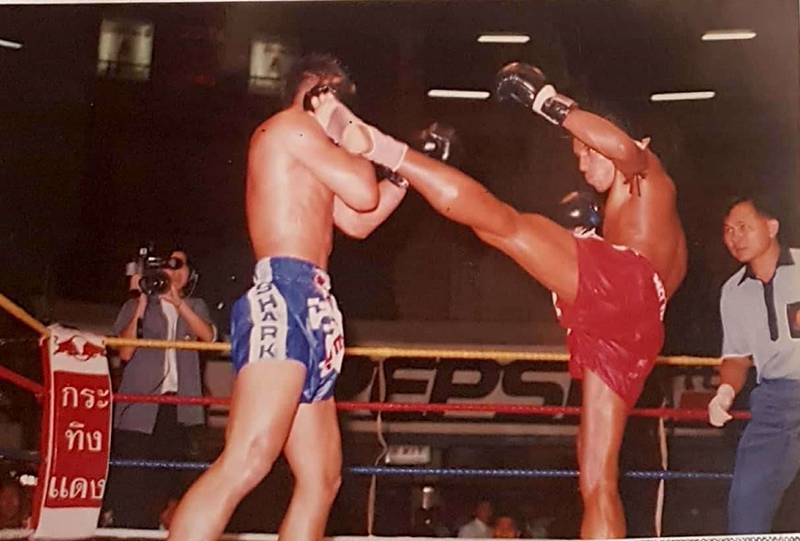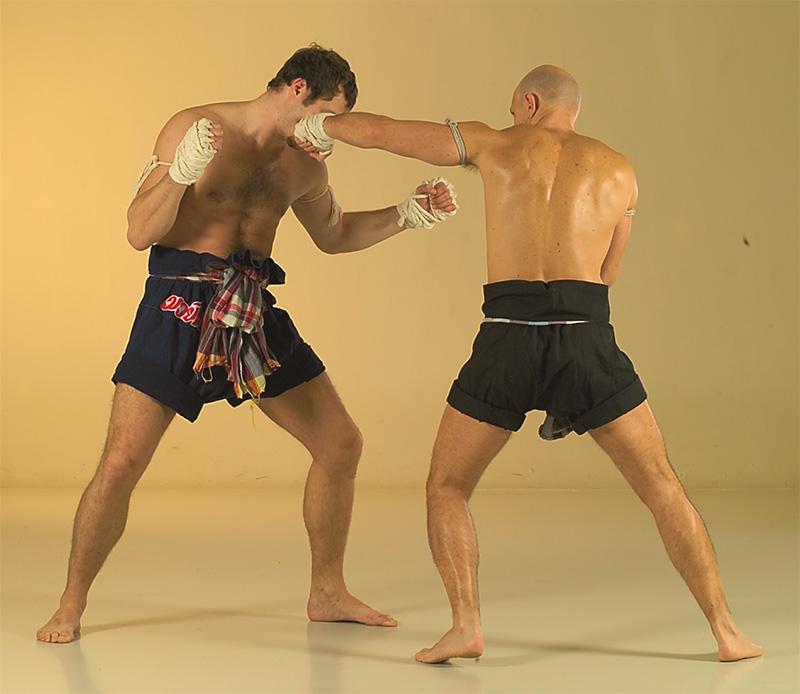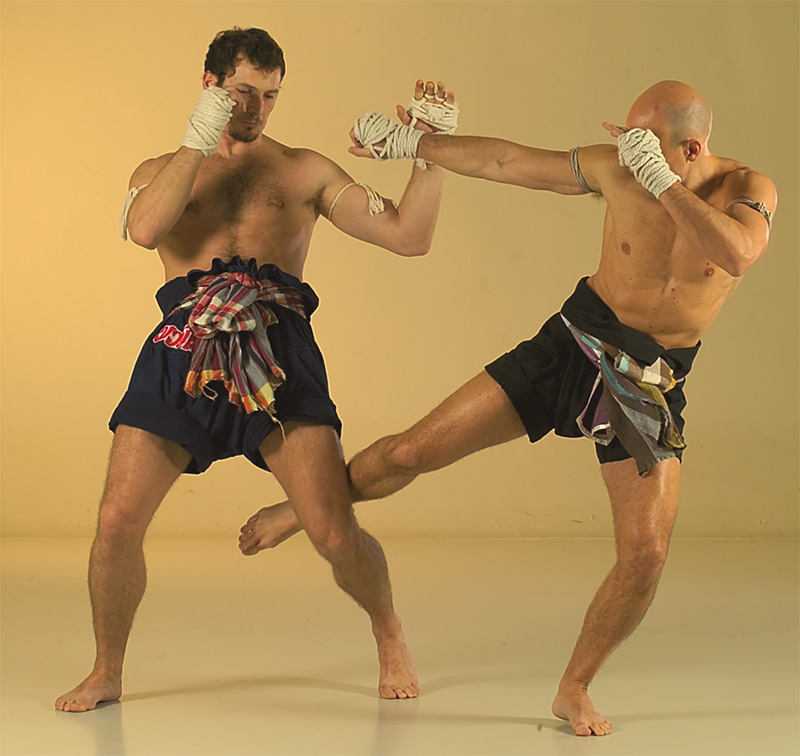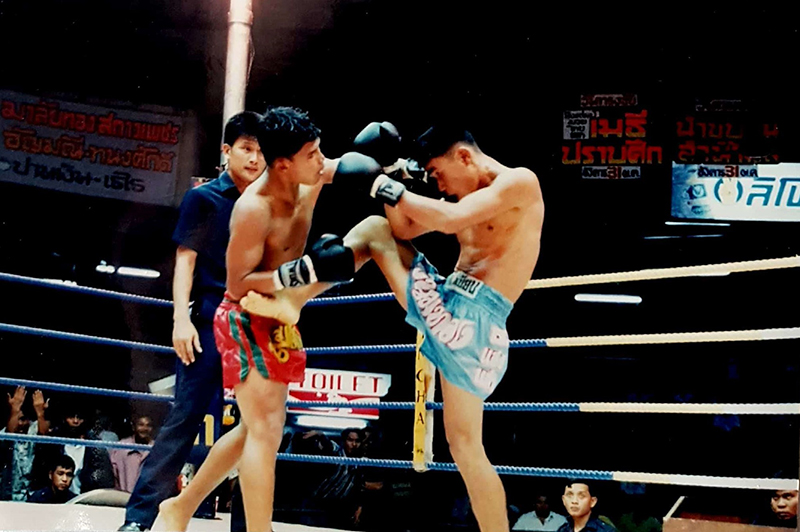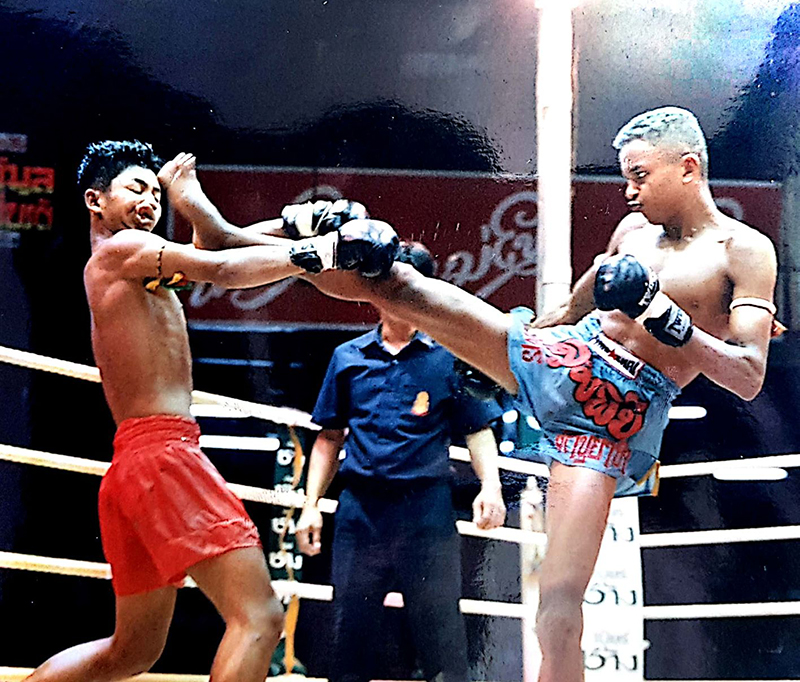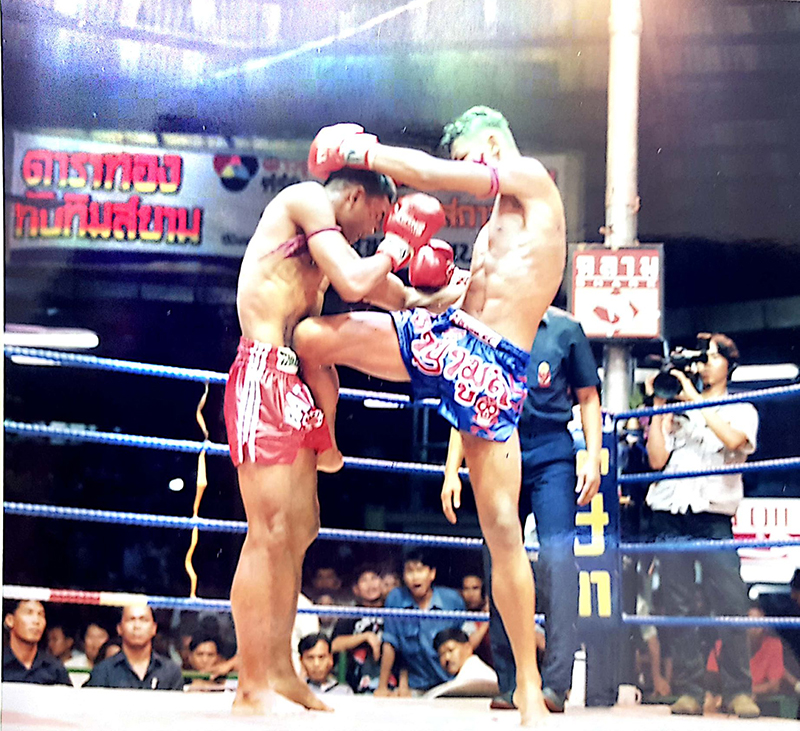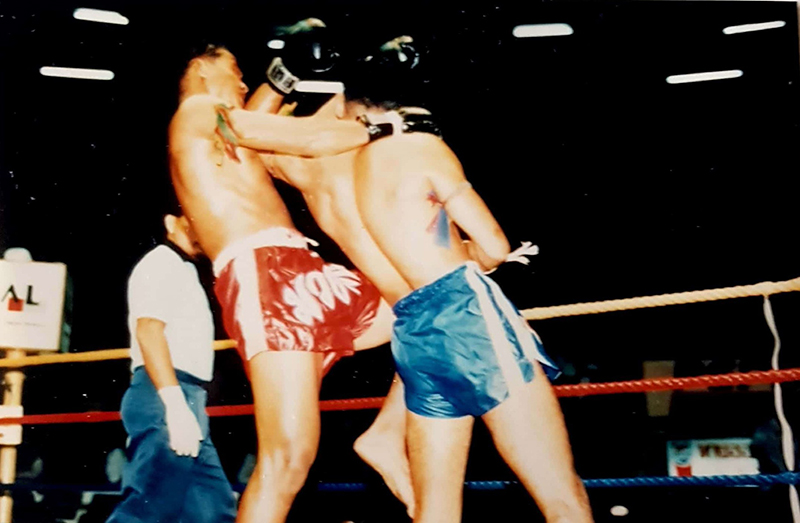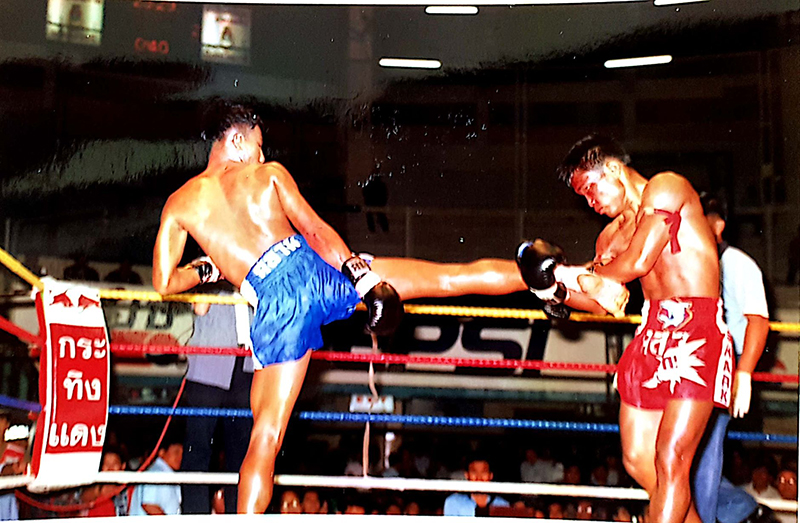
What is your Muay Thai style?
By Marco De Cesaris
Professional Muay Thai is a well-structured combat sport governed by strict rules and regulations. As a modern sport it is practised in the same way in every gym. There is a general standardization of the techniques used by fighters and “secret tricks” are long since no more part of the game. However, not all thai boxers share the same physical and mental characteristics and, as a consequence, each fighter must follow his own way path to victory as far as training methods and combat strategies are concerned. In fact, the best trainers start by spotting the strong and weak points of their boxers. Then, devise a specific fighting strategy tailor made for each boxer’s characteristics.
As a result, each thai boxer is supposed to be proficient in only a specific field of the fight game. Therefore, he will develop his own “style” of Muay Thai based on his personal attributes. This procedure was the standard training system in ancient Muay (aka Muay Boran) when fights were no holds barred contests. In fact, in the past it was more common to possess some “secret techniques” that belonged to a specific Khru or to a regional school. Those techniques were jealously guarded and were part of the heritage of the Khru’s style. 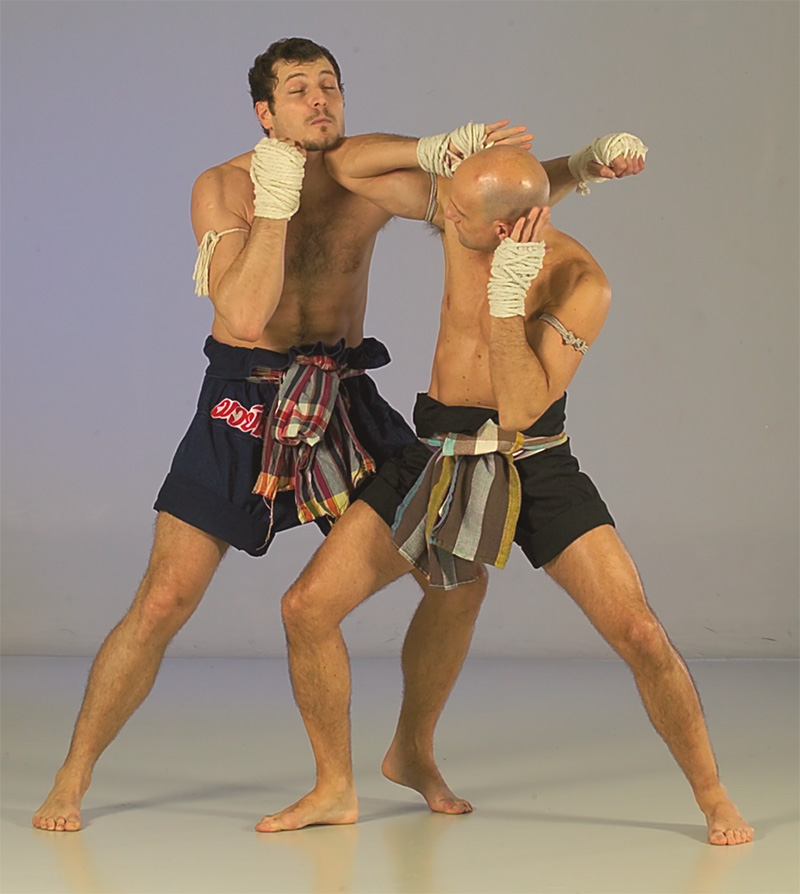 When Muay became a national sport with standardized rules and regulations, the special techniques of each traditional school slowly became known by all competitors and the idea of “secret” trick became obsolete. However, even now modern professional Muay Thai share some features with the ancient Siamese fighting traditions. On of this common element is the idea of boxers’ strategic specialization in a specific field of combat. Nowadays, in most training camps thai boxers are split into 5 general categories according to their technical prowess. A fighter can belong to one of the following groups:
When Muay became a national sport with standardized rules and regulations, the special techniques of each traditional school slowly became known by all competitors and the idea of “secret” trick became obsolete. However, even now modern professional Muay Thai share some features with the ancient Siamese fighting traditions. On of this common element is the idea of boxers’ strategic specialization in a specific field of combat. Nowadays, in most training camps thai boxers are split into 5 general categories according to their technical prowess. A fighter can belong to one of the following groups:
1.Nak Muay Mahd:
This kind of Thai Boxer relies heavily on his punching power. His strategy is based on keeping at middle range and unloading “bombs” against the opponents’ head and body.
2.Nak Muay Tae:
This type specializes in roundhouse kicks, targeting the legs, body and head of the opponents. Prefers to stay at bay from the adversaries.
3.Nak Muay Kao:
This is a typical short range fighter that possess solid grappling skills, strong knee strikes and great endurance. Constantly marching forward to close the gap and grapple.
4.Nak Muay Sok:
This kind of thai boxer is a short range fighter that doesn’t rely of physical strenght to win but rather possesses great timing. His strong point is the elbow strike, the so called intangible weapon.
5.Nak Muay Fi Meu
The boxers who belong to the last category are the top of the crop. They can fight at all ranges and are skilled in the use of all body weapons. Only the superstars are true Nak Muay Fi Meu.
Each specialist builds his fighting strategy upon a few core offensive techniques. In order to apply those techniques he develops specific footwork patterns devised to close the gap, keep distance or evade the opponent’s attacks. As a consequence, each type of boxer will maneuver to keep as much as possible at a given distance from the opponent, i.e., long range, middle range, short range. Once equipped with a few powerful offensive weapons and a specific sharp footwork a thai boxer is ready to face most opponents. However, when facing professional fighters, unloading the bombs he possesses may not result an easy task. Because of that, every specialist must be equipped with one or more auxiliary weapons that fill the gaps in his arsenal. The auxiliary weapon is crucial, because when skilfully employed, it can pave the way to the use of the core weapons the specialist possesses. A typical auxiliary body weapon is the low roundhouse kick that punchers use to complement their ability to attack with their fists.
This style (punches combined with low kicks) was the technical bedrock that gave birth to the Japanese interpretation of Muay Thai, the combat sport we know nowadays as Kick Boxing.
Let’s analyse the characteristics of each Muay Thai style more in detail:
I.Nak Muay Mahd
A. Prerequisite to be a Nak Muay Mahd: possessing “heavy hands”. Each punch thrown must hurt the opponent no matter where it lands, body or head. Possessing a heavy punch is often considered a natural gift but superior skill can sometimes compensate for a physiological lack of power.
B.Core techniques:
-Mahd Trong, cross (Original Muay Boran strategy Phra Pai Lom Singkorn)
-Mahd Wiang, hook (Original Muay Boran strategy Wanorn Hak Dan)
-Mahd Suhy, uppercut (Original Muay Boran strategy Prakarn Poed Lok)
-Mahd Phasom series of punches
C. Preferred distance: middle range
D. Auxiliary weapon: roundhouse kicks
II. Nak Muay Tae
A. Prerequisite to be a Nak Muay Tae: being flexible and possessing excellent kicking skills. Hard and durable shins surely help to inflict damage when kicking the legs and body but the real secret weapon of all Nak Muay Tae is the neck kick or Tae Ken Ko. And you do need flexibility and skill to kick high when you are under pressure.
B. Core techniques:
-Tae Ken Ko, neck kick (Original Muay Boran strategy Long Dan Pratu)
-Tae Lam Tua, body kick (Original Muay Boran strategy Manop Len Kha)
-Tae Kha Nok, leg kick (Original Muay Boran strategy Kwad Torani)
E. Preferred distance: long range
F. Auxiliary weapon: straight kicks, punches
III. Nak Muay Kao
A. Prerequisite to be a Nak Muay Kao: without being an aggressive fighter and possessing sound grappling skills no fighter can hope to become a good Nak Muay Kao. Muay Thai knee fighters must not be scared of marching against the opponent’s barrage of strikes and must be confident that, once closed the gap, the fight will be kept at close range until the opponent will be exhausted and possibly surrender.
B. Core techniques:
Kao Suhon, hold and knee (Original Muay Boran strategy Hak Ko Aiyara)
Kao Yon, thrown knee (Original Muay Boran strategy Kao Yok Nan)
Kao Loy, jumping knee (Original Muay Boran strategy Wanorn Hern)
C. Preferred distance: short range
D. Auxiliary weapon: roundhouse kicks, punches
IV. Nak Muay Sok
A. Prerequisite to be a Nak Muay Sok: superior timing and sharp elbowing skills. In order to be an excellent Nak Muay Sok a boxer doesn’t need muscular strenght. On the contrary, all he needs are excellent reflexes to apply elbow strikes at medium and short range, both offensively and as counterattacks.
Nak Muay Sok are feared because you can hardly foretell a well-executed elbow strike: for this reason Sok is called the “intangible weapon”.
B. Core techniques:
-Sok Dtad, horizontal elbow (Original Muay Boran strategy Pra Yaike)
-Sok Ngad, uppercut elbow (Original Muay Boran strategy Sok Fan Na)
-Sok Trong, straight elbow (Original Muay Boran strategy Pung Hok)
C. Preferred distance: short range
D. Auxiliary weapon: punches
V. Nak Muay Fi Meu
A. Prerequisite to be a Nak Muay Fi Meu: being skilled in all aspects of fighting. Perfect use of all body weapons, superior defensive as well as offensive skills.
A Fi Meu can use the proper counter techniques to cope with all different “stylists”. Against a Nak Muay Mahd he can dodge and counter with his elbows or punches or otherwise keep the opponent at bay with straight and roundhouse kicks depriving him of all his power. And likewise with a Nak Muay Tae, Kao or Sok. You’d better not face a real Nak Muay Fi Meu in the ring, if you can.
B. Core techniques: Mahd, Thao, Kao Sok- punches, kicks, knees, elbows (Original Muay Boran strategy Pan Lam)
C. Preferred distance: long range, middle range
D. Auxiliary weapon: all body weapons


